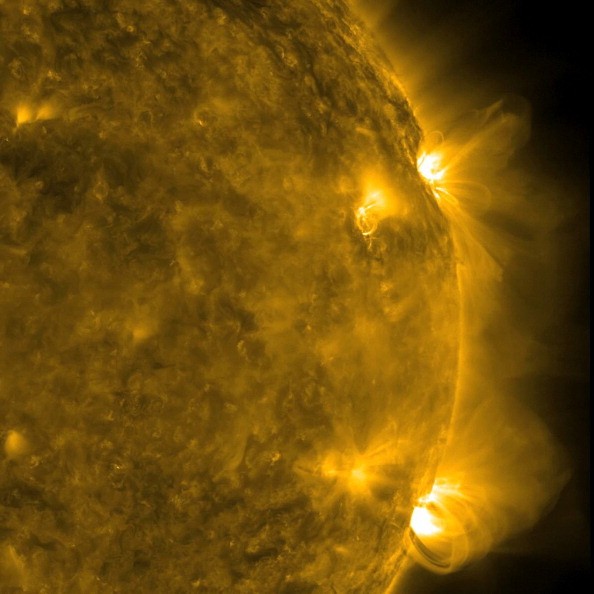A powerful solar flare is expected to hit the Earth. Space experts said that the particles that will reach the planet came from the latest Sun surface explosion back on Jan. 30.

Once the solar flare actually hits the planet, researchers said that polar lights (auroras) would happen from the Arctic Circle to New York.
This just shows that solar flares are quite becoming common on the sun's surface. Recently, Tech Times reported that SpaceWeather issued a solar flare warning back in November 2021.
On the other hand, a giant solar flare also appeared in October 2021, creating wide-area radio blackouts.
New Powerful Solar Flare To Hit Earth
According to Live Science's latest report, the new powerful solar flare came from a massive sun surface eruption, which led to an M1-class or mid-class solar flare.

Also Read : New Solar Flare Could Create Bright Aurora Lights! But, Satellites, Power Grid Might be Disrupted
The European Space Agency (ESA) explained that this solar burst from the sunspot called AR2936 is long-lasting. Since this is the case, it creates a massive coronal mass ejection (CME) halo.
Based on the forecast model created by the National Oceanic and Atmospheric Administration (NOAA), the CME halo seems to be larger than the Sun when it comes to diameter.
Because its size is getting bigger, experts said that the solar particles it contains could reach Earth. But should people worry about this new solar flare?
Is the Solar Flare Dangerous?
Space.Com reported that the upcoming solar flare could create G2-class geomagnetic storms, moderate class, low hazard type.
This means that the G2-class magnetic storms are not alarming. They don't even create power grid or satellite interferences.
As of the moment, the Sun is still expected to create more solar flares, especially since it is under the so-called Solar Cycle 25.
This solar cycle activity is expected to last for 11 years.
For more news updates about solar flares and other natural space events, always keep your tabs open here at TechTimes.
Related Article : NASA Captures Sun's Mid-Level Solar Flare! SWPC Issues Warning for Astronauts on High-Altitude Flights
TechTimes own this article
Written by: Griffin Davis
ⓒ 2025 TECHTIMES.com All rights reserved. Do not reproduce without permission.




